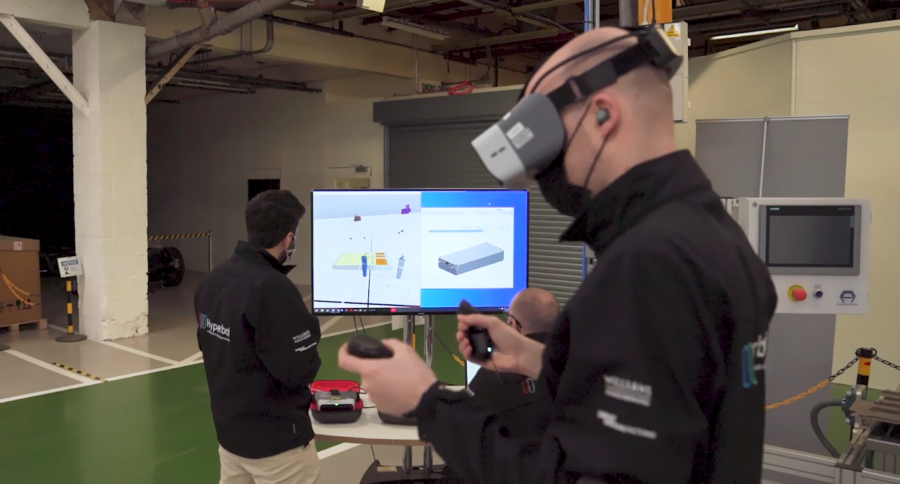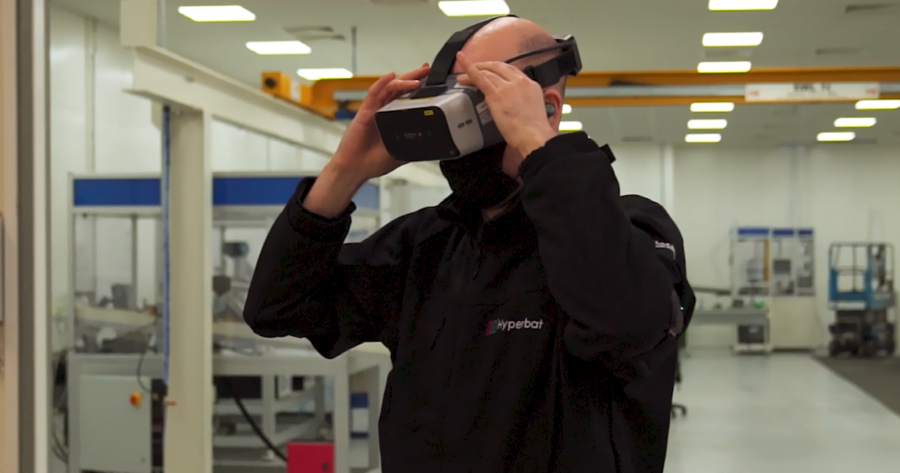June 16, 2022 – NVIDIA and several partners have recently announced a successful proof of concept that uses edge computing and 5G-enabled virtual reality (VR) technology to enable two engineering teams about 70 miles apart to collaborate as if they were in the same room.
The project is taking place at Hyperbat, the UK’s largest independent electric vehicle battery manufacturer. The company’s engineers based in Wantage and Coventry are able to work simultaneously on a 1:1-scale digital twin of an EV battery.
According to NVIDIA, the engineers are able to immerse themselves in virtual tasks that mimic real life thanks to renders created using NVIDIA GPUs, RTX Virtual Workstation software and NVIDIA CloudXR technology. The digital transformation results in reduced inefficiencies and faster design processes.
The team at Hyperbat, in partnership with BT, Ericsson, the GRID Factory, Masters of Pie, Qualcomm and NVIDIA, have developed a proof of concept that uses VR to power these collaborative sessions.
NVIDIA stated that using a digital twin with VR helps to deliver greater clarity during the design process and allows engineers to work together from anywhere to effectively identify and rectify errors during the vehicle battery design process, making projects more cost-effective.

“This digital twin solution at Hyperbat is the future of manufacturing,” said Marc Overton, Managing Director of Division X, part of BT’s Enterprise business. “It shows how a 5G private network can provide the foundation for a whole host of new technologies which can have a truly transformative effect in terms of collaboration, innovation and speeding up the manufacturing process.”
Masters of Pie’s collaboration engine, called Radical, delivers a real-time extended reality (XR) experience that allows design and manufacturing teams to freely interact with 3D, lifesize models of electric vehicle batteries, which gives the Hyperbat team a single source of truth for each project, with no need for numerous iterations.
NVIDIA noted that the 5G-enabled VR headset that is used for the proof of concept is powered by the Qualcomm Snapdragon XR2 platform, and gives users an untethered experience that can be launched with just one click. With the solution designed specifically to address all the challenges of extended reality, it doesn’t require a lengthy setup, nor the importing and exporting of data. Designers can simply put on their headsets and get straight to work.

5G’s ultra-low latency, deployed using an Ericsson radio and private 5G network at Hyperbat, provides faster speeds and more reliable connections, as well as immediate response times.
By combining 5G with the cloud and XR, the partnership was able to remove inefficiencies in design processes and speed up production lines. Such improvements could also greatly benefit the wider manufacturing sector, according to the company.
Finally using Project Aurora — NVIDIA’s CloudXR and RTX Virtual Workstation software platform for XR streaming at the edge of the 5G network — large amounts of data can be rapidly processed on remote computers before being streamed to VR headsets with ultra-low latency.
“Hyperbat’s use case is another demonstration of how 5G and digitalization can really help boost the UK’s economy and industry,” said Katherine Ainley, CEO of Ericsson UK and Ireland. This technology “can really drive efficiency and help us innovate on a whole new scale,” she added.
For more information about NVIDIA and its CloudXR platform and general XR solutions, please visit the company’s website.
Image / video credit: NVIDIA
About the author
Sam is the Founder and Managing Editor of Auganix. With a background in research and report writing, he has been covering XR industry news for the past seven years.
